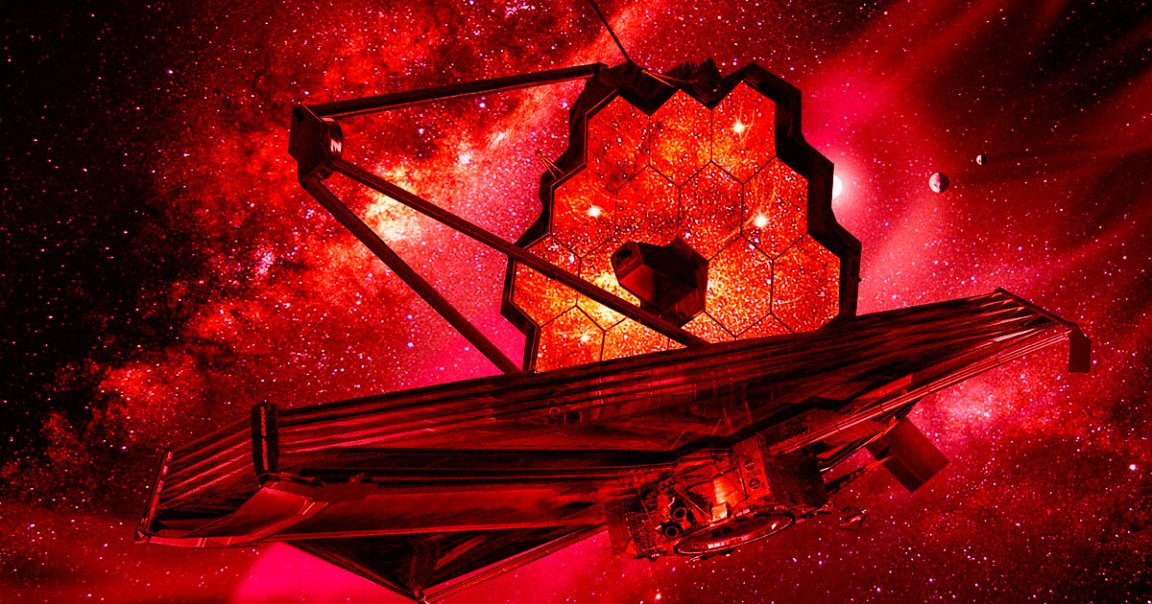
When the James Webb Space Telescope first came online in 2022, it immediately spotted something astronomers had never seen before: “little red dots” peppering the ancient expanse of deep space, originating from around when the universe was just one billion years old.
Ever since, we’ve struggled to explain what these faint signals could be. The prevailing theory is that they’re some kind of extremely compact galaxy. But at only two percent of the diameter of the Milky Way, the distribution of stars would have to be impossibly dense, perhaps more so than our current laws of physics allow.
They’re also too faint to be produced by a quasar, a type of supermassive black hole that is actively devouring matter, which it causes to heat up and glow. Moreover, the black holes would be “overmassive” for such a small galaxy, scientists argue.
Now, famed Harvard astronomer Avi Loeb (or infamous, depending on how you view his speculative theories regarding aliens) and his colleague Fabio Pacucci believe they have an answer. In a new study published in the Astrophysical Journal Letters, the pair reinforce the idea that the family of red oddities are, in fact, galaxies — but are unusually tiny because they haven’t started spinning up to speed yet.
It’s a hypothesis rooted in one of the leading theories for galaxy formation, which holds that these structures form in “halos” of dark matter, the invisible substance thought to account for 85 percent of all mass in the cosmos. While we can’t see or interact with dark matter, it does exert a significant gravitational influence, which explains how the largest structures in the cosmos came together and took shape.
In the study, the astronomers propose that the diminutive galaxies formed in halos that just so happened to be among the slowest spinning in the cosmos, with 99 percent of halos spinning faster. The idea, in principle, is simple. If you held out a piece of rope in one hand and started spinning in place, the rope would stretch out and reach farther. But if you slowed down, the rope would slump to the ground.
This hypothesis would explain why we’re only seeing the dots at such a nascent period of the universe. Over time, the halos would inevitably speed up, and their constituent galaxies would expand.
“Dark matter halos are characterized by a rotational velocity: some of them spin very slowly, and others spin more rapidly,” Loeb said in a statement about the work. “We showed that if you assume the little red dots are typically in the first percentile of the spin distribution of dark matter halos, then you explain all their observational properties.”
It’s a compelling theory — but it’s not the only game in town. Recently, two teams of astronomers found clues that what we’re witnessing may actually be an entirely new class of cosmic object: “black hole stars.”
Their work suggests the glowing dots are an active supermassive black hole surrounded by a vast and thick shell of gas. The intense radiation of the black hole heats up the shell, which absorbs most of the emissions, dimming the light to an outside observer. In many ways, it resembles a star blown up to epic proportions — except, instead of nuclear fusion powering the center, there’s a voracious black hole churning through matter.
Loeb and Pacucci’s theory doesn’t address whether these slow-spinning galaxies have a black hole at their center, but suggests that they could form one.
“Low-spin halos tend to concentrate mass in the center, which makes it easier for a black hole to accrete matter or for stars to form rapidly,” Pacucci said in the statement. The luminous red dots, he added, “might help us understand how the first black holes formed and co-evolved with galaxies in the early universe.”
More on space: Astronomers in Awe of Terrifying “Eye of Sauron” That’s Pointed Straight at Earth